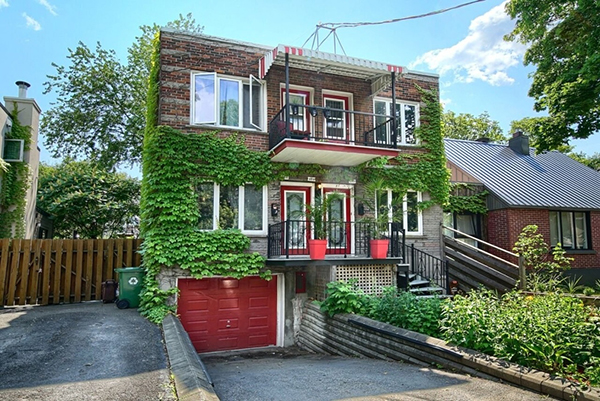October 15th 2018
 Over the past several months, we’ve been talking about investments, and more specifically about investing in real estate. We’ve seen that real estate is an exceptional investment because it offers us two types of return rather than one. We receive a return on our investment by way of capital appreciation. Properties go up in value over time. At the same time by investing in real estate we also enjoy a steady ongoing stream of revenue in the way of rent.
Over the past several months, we’ve been talking about investments, and more specifically about investing in real estate. We’ve seen that real estate is an exceptional investment because it offers us two types of return rather than one. We receive a return on our investment by way of capital appreciation. Properties go up in value over time. At the same time by investing in real estate we also enjoy a steady ongoing stream of revenue in the way of rent.
Then we took a look at the principal of leverage. The ability to make money through the use of other peoples money. We saw that by placing a mortgage on property rather than using all our own funds to purchase it, we could greatly increase our overall rate of return. Now let’s see if we can put it all together into a plan that will work for us in our everyday life. A plan that will build our net worth and guarantee us a steady income stream in retirement.
Lets suppose you are a working individual, male or female, and relatively young, say no more than 40 years old, or 45 at most. (If you are older, well into your 50’s for example, don’t worry. While the simple plan I’m about to unfold won’t seem to apply in your situation, it can be easily modified as we’ll see a couple of issues from now.) Suppose you are in a reasonable salaried job, or even self-employed, but you worry about retirement. Either you don’t have a pension, or if you do, it won’t provide the money you’d like to have available at retirement. After all, you don’t want to scrimp and do without when you finally retire and are free to do all the things you’ve dreamed of over the years. What can you do to prepare?
Here’s a simple three step process which if followed will guarantee you a great income when you retire. And an income you’ll never exhaust, because by its very nature it just keeps on generating revenue. Are you ready?
 It’s that simple. Now notice I said it was simple, I didn’t say it was easy. For one thing it involves tenants and tenants are often not easy to deal with. It also involves saving a down payment – not once but ten times. If you’ve ever purchased a home you’ll know that saving the down payment is the hardest part. Now I‘m asking you to do it again. Ten times. It’ll take some discipline but it can be done. I’ll show you how next issue.
It’s that simple. Now notice I said it was simple, I didn’t say it was easy. For one thing it involves tenants and tenants are often not easy to deal with. It also involves saving a down payment – not once but ten times. If you’ve ever purchased a home you’ll know that saving the down payment is the hardest part. Now I‘m asking you to do it again. Ten times. It’ll take some discipline but it can be done. I’ll show you how next issue.
But let’s look at the process of our simple plan. Over the next ten years we work at acquiring one property a year. Each time we do we examine the income potential just to be sure the income stream from the rent will carry the mortgage amortized over no more than 15 years.
Our first milestone comes at the end of year 10. We’ve acquired our 10 properties. You may choose to continue buying, but if you’re following this simple plan you don’t need to. You’ve arrived. Let’s suppose you’ve selected a mixture of single family, duplex, tri-plex and semi-detached rental properties. Depending on your marketplace, the average price per property could be somewhere around the Two Hundred Fifty Thousand Dollar mark. So in total, you’ve acquired over a ten year period Two and a Half Million Dollars worth of property.
The next milestone comes at year 15. This is the point where your first property is finally paid for. Your properties have been earning you money all along, but to this point it’s all gone to pay off the mortgages. Now you’ve got surplus cash coming in. The full rent from that first property which is now paid up. In another year, a second property is paid off and your excess cash flow has doubled. This continues each year for the next 10 years until all the properties are free and clear. (In actual fact, as these properties begin to be paid off, you may want to use the excess cash to shorten the amortization on the remaining properties. In so doing, you can probably reduce the time line from 25 years to 20.)
 So now here you are at the end of the plan with 10 rental properties free and clear. You’ll find at the time you acquired them, they could possibly have given you a return as high as 9%. But let’s be conservative. Let’s assume 6%. A 6% return on $2,500,000 is $150,000 a year. That’s not a bad pension. And it’s indexed to inflation. On average you’ll find your properties go up in value at least the cost of living and so too do your rents.
So now here you are at the end of the plan with 10 rental properties free and clear. You’ll find at the time you acquired them, they could possibly have given you a return as high as 9%. But let’s be conservative. Let’s assume 6%. A 6% return on $2,500,000 is $150,000 a year. That’s not a bad pension. And it’s indexed to inflation. On average you’ll find your properties go up in value at least the cost of living and so too do your rents.
The final point we’ve said is to never sell. What you’ve done essentially is create a goose that lays a golden egg every month. You’ve got to maintain it and look after it. But if you do, the revenue is guaranteed. Selling? That would be killing the goose. Leave the properties to your kids. Let them sell one day if they wish. This is your pension. You’ve worked hard for it. You’ve built it. Now enjoy the proceeds. It’s that simple.
Wayne Quirk, Author
“THE MONEY MACHINE”
wayneq@remax-gc.com